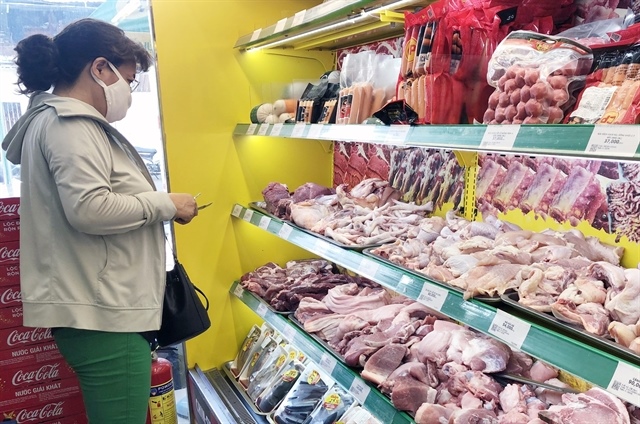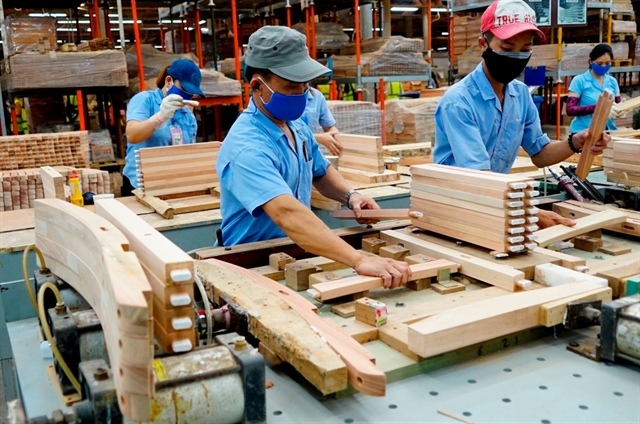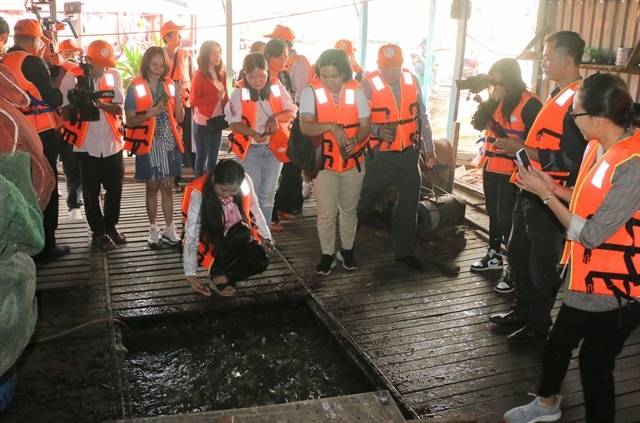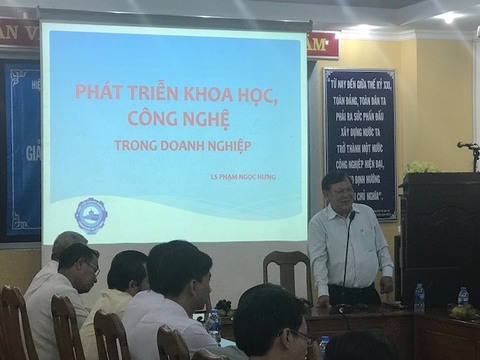Domestic automobile market set for big growth
Domestic automobile market set for big growth
The Vietnamese automobile market is predicted to develop strongly between now and 2035 as the country is experiencing a “golden population structure,” which offers opportunities to promote the automobile industry.
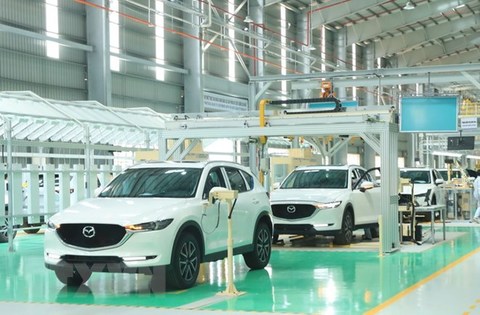
The market is expected to reach 750,000-800,000 units by 2025 and 1.7-1.85 million units by 2035.
The prediction, made by the Industrial Policies Strategies Institute (IPSI) under the Ministry of Industry, is based on three factors: population , income per head and average number of cars per 1,000 people.
Speaking at a seminar on automobile development, which was held during the AutoExpo 2018 in Ha Noi from June 6-9, Le Huy Khoi, head of IPSI’s Study and Market Forecast Division, said Viet Nam’s population had reached more than 96 million at the end of 2017. It is estimated that the figure will increase up to 98.2 million by 2020, some 101.1 million by 2025 and 107.8 million by 2035.
Meanwhile, the GDP (gross domestic product) per capita growth of Viet Nam in 2017 reached VND53.5 million, equivalent to US$2,385 per person per month. It is predicted that from now until 2035, the GDP per capita growth will be 6.8 per cent per year, reaching an average of $7,780 per capita by 2035.
Along with economic development, the income of the Vietnamese people has also increased since 2012. By 2035, more than half of the country’s population will join the ranks of the global middle class, with a spending of $15 or more per day.
Domestic production is expected to reach an average of 18.5 per cent per annum during 2018-25 and some 13.8 per cent per year during 2025-35. Vehicle production is predicted to reach 531,585 units by 2025 and 1.77 million units by 2035.
Do Huu Hao, chairman of the Vietnam Society of Automotive Engineers, said before the threshold of deep integration and import tax on complete built-up units became zero per cent in the ASEAN block since early this year, many domestic automobile businesses had planned to expand production as they saw enormous potential in the market.
These projects include two giant plants of Truong Hai Auto JSC (Thaco)---the VND12 trillion ($528 million) Thaco Mazda automobile manufacturing plant with a capacity of 100,000 vehicles per year and the VND7 trillion bus assembly factory with a capacity of 20,000 vehicles per year; a project on expanding the production of Hyundai buses with a capacity of 120,000 per year, jointly conducted by Thanh Cong Group and Hyundai Motor Group; and VinFast, the first Vietnamese automobile manufacturing complex opened by Vingroup, with a designed capacity of 500,000 units per year by 2025.
The focus of these projects is to set the localisation rate at 40 per cent or more (local part supply), not only to serve the domestic market but also to export to ASEAN countries in future.
Auto importers’ recommendations rejected
In term of auto imports, the Ministry of Transport has directed auto importers to strictly implement regulations of the Government’s Decree 116/2017/ND-CP on the production, assembly, import and business of automobile warranty and maintenance services.
Auto importers are also required to follow the transport ministry’s guiding Circular 03/2018/TT-BGTV.
The ministry issued the directive after the United States and some foreign associations said last month they were facing difficulties in implementing Decree 116’s regulation that requires them to provide a Vehicle Type Approval (VTA) certificate and inspect autos to be imported in batches, reported tienphong.vn.
According to the ministry, the VTA certificate is one of the initial bases for the quality inspection agency to inspect and certify the batches of autos to be imported on the parameters of quality, technical safety and environmental protection in accordance with the country’s current regulations.
This aims to limit the import of bad-quality autos from foreign countries and protect the domestic consumers. It will also create a level playing field in quality management with locally produced and assembled automobiles.
The ministry said all parties that faced problems related to the decree and its guiding circular had been supported and guided by the ministry. For example, in the case of Ford Vietnam and GM Vietnam, which imported autos from the United States, the ministry had written document 1404, dated February 7, admitting that the US auto importers’ certification of VTA was suitable with the current regulations.
After that, Ford Vietnam completed procedures for inspection, testing and issuance of VTA for the batch of Ford Explorer cars imported from the United States to Viet Nam.
The ministry said major automakers, such as Honda, General Motors, Toyota, Mitsubishi, BMW and Mercedes-Benz, also received VTA certificates for imported vehicles in accordance with the country’s current regulations and that they all had imported cars from other US markets to the Vietnamese market.
So far, cars from different markets such as South Korea, Thailand, Indonesia, Germany and some European countries have been imported to Viet Nam without difficulty.
Regarding the US’s complaint that the inspection of every batch of imported vehicles lasts up to two months and the cost goes up to US$10,000, the ministry denied the information. It pointed out that in the absence of this regulation, there would be some risks and loopholes as enterprises could import poor-quality vehicles to Viet Nam compared to the first batch, which had already been allowed to enter the Vietnamese market for qualified quality.
This will make it impossible for the authorities to control the quality of emissions, safety and quality of components and other systems in the vehicles. This is a major flaw in the quality management of imported vehicles, affecting the safety and welfare of consumers.
With a market of some 300,000 vehicles per year, each auto importer, such as Honda Vietnam and GM Vietnam, usually imports between hundreds and thousands of vehicles for each shipment. The ministry said if it did not carefully check, it would be difficult to control the quality as prescribed in the regulations.
It further said picking a model in the imported auto batch for inspection did not raise financial costs and time. Instead, it saves businesses some $2,500 in experimental costs and takes just two weeks.
Therefore, the ministry has recommended the Government to instruct the relevant ministries and sectors to continue to strictly implement Decree 116 through active propaganda and guidance, creating favourable conditions for enterprises in production and those doing business in Viet Nam to comply effectively with the current regulations.


